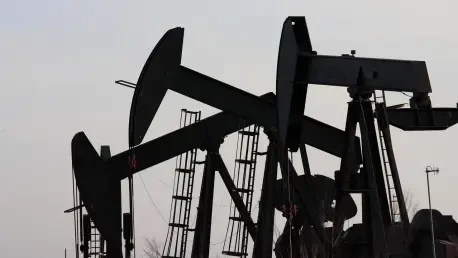In a bid to maintain equilibrium in the global oil markets, OPEC+, a formidable alliance of major oil-producing countries, is progressively undoing previously established output cuts. This coalition, comprising the Organization of the Petroleum Exporting Countries and key allies like Russia, is keenly observing global demand trends and adjusting its production strategies accordingly. The move to bring 2.2 million barrels per day (bpd) back into the market is spearheaded by eight pivotal members: Algeria, Iraq, Kazakhstan, Kuwait, Oman, Russia, Saudi Arabia, and the United Arab Emirates. This incremental approach began in earnest, with production gradually increasing by 1.4 million bpd over several months. This meticulous strategy exemplifies OPEC+’s commitment to balancing the global oil supply, ensuring the stability of both production levels and market prices. The decision to progressively unwind voluntary cuts aligns with their ongoing objective to maintain influence over the ever-fluctuating demand.
Strategic Production Decisions and Influencing Factors
The adaptive strategy of OPEC+ in managing its oil output reveals a nuanced understanding of the global energy landscape, where demand remains unpredictable. The decision to reverse oil production cuts, initially implemented to stabilize plummeting prices, reflects an astute response to current market conditions. While much of the developed world continues to depend on oil as an energy source, incremental production adjustments are crucial in preventing price spikes that could dampen economic recovery efforts. As new trends emerge, including shifts towards renewable energy, the alliance is poised to recalibrate its approach to maintain relevance in a rapidly transforming market.
Additionally, this strategic adjustment underscores a broader objective: to fulfill commitments to previous agreements without creating market disruptions. The planned gradual increase is not just about responding to immediate demand but also about fostering long-term stability in an industry that has seen its share of volatility. Engaging in a coordinated effort, the alliance remains receptive to shifts in demand, all while staying the course on its overarching mission of achieving market equilibrium. By cautiously adding oil back into the supply chain, OPEC+ showcases an adeptness in orchestrating a delicate balance between both supply and restriction.
Challenges and Prospects in a Transforming Market
Beyond the immediate adjustments, there are other challenges that OPEC+ continues to navigate. One significant hurdle is the persistent push towards cleaner, more sustainable energy sources globally. As the international community increasingly sets ambitious targets to reduce carbon emissions, reliance on fossil fuels may dim over the coming years. Consequently, OPEC+ finds itself at an intersection where maintaining significant control over oil production must be balanced with recognition of broader environmental goals. This necessitates not only responding to the current global energy demand but also contributing to the conversation on reducing carbon footprints.
The calculated efforts of OPEC+ to reverse cuts also acknowledge the interplay of multiple geopolitical forces. Amid fluctuating global economic conditions, political tensions, and regional conflicts, the group’s decisions serve as a critical lever in the complex machinery of global trade and diplomacy. Looking forward, the group must continuously reassess its strategies to address emerging scenarios, including technological advancements and evolving regulatory landscapes. By doing so, OPEC+ ensures its role remains decisive in a future where energy paradigms might differ vastly from the current dynamics. This strategic foresight reinforces OPEC+’s influence, ensuring it stays a cornerstone in the global energy sector even as the world transitions into newer energy models.
Future Outlook and Strategic Considerations
OPEC+’s strategy in adjusting oil production showcases a keen insight into the global energy scene where demand can be erratic. Initially, production cuts were made to stabilize drastically falling prices, but the decision to reverse these cuts indicates a strategic adaptation to present market dynamics. While many developed nations still rely predominantly on oil for energy, careful production modification is vital to prevent price surges that might hinder economic growth. As global energy trends evolve, including a shift towards renewables, OPEC+ is prepared to reevaluate its strategies to stay relevant in the swiftly changing market. This approach not only aims to honor past agreements but also seeks to avoid causing market disturbances. The thoughtful, gradual increase in production is not solely a reaction to short-term demand but also an initiative towards ensuring lasting stability in an often volatile sector. By cautiously adding oil back into the market, OPEC+ displays a skillful balancing act, managing both supply and restriction to maintain market harmony.









